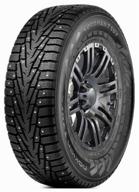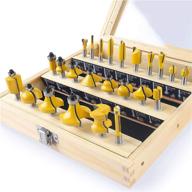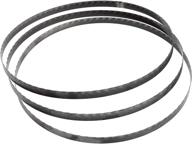
Review on RotoZip GP8 8 Inch Drywall Cutting by Kantrel Tunstill

Much better than DeWalt bits - well designed, sharp, easy to use.
I used these bits with a Dewalt DW660 drywall router. I used to use Dewalt bits but they are no longer available. Now I understand why you can't get Dewalt bits - Roto Zip bits are much better. The main differences are that the non-cutting tip of the bit is shorter (which is fine for my taste, DeWalt bits are too long) and the bit has a sharper feel (at least it cuts easier). I've seen reviews where people have written that the racquet is easy to break. You must be doing something wrong to break it while cutting the drywall. Here are some tips to reduce the risk of breakage: 1. When installing into your drywall router, insert into the collet to the start of the helical blade. You don't want the collet to snag on the helical cutters, but rather slide them in front of the cutters as far as possible. Don't let the bit stick out anymore. The longer the open part of the bit, the easier it is to break. Just think of the leverage that is exerted on the long racquet. 2. Attach the depth ring to the drywall router bit so that the helical cutting edge starts on the other side of the drywall. That means you set the cutting depth to the thickness of the drywall (usually 1/2 inch) plus about 3/16 inch (that's the length of the tip itself, which has no cutting edge, plus a little more). If your router isn't cutting drywall well, it most likely means you set the depth of cut too low. Remember that the tip of the bit has no sharp cutting edges. It is used to guide the bit along the edge of your flashlight or junction box. IT doesn't cut. Only spiral cutters can cut drywall. If the tip of the guide isn't completely on the other side of the drywall without a cutter, you won't be able to cut. It would be like chewing without teeth. When you set the depth of cut on a piece of drywall, you should be able to see the start of the cut edge on the other side of the drywall. If you can't cut drywall like butter because you didn't get the depth of cut right, you'll end up pushing the router too hard to get it to cut and quickly break the bit. There is no strong pressure on the router. The force should be light and aimed primarily at your box/jar to ensure the router follows its contour. In other words, you should feel more pressure on the box you're cutting along (and on the drywall to make sure the depth gauge is always in contact with the drywall) than in the direction you're cutting. Drywall is very easy to cut. he is soft Any excessive force can either cause the router to deviate from the desired path or break the router bit. Finally, as you probably know, when you cut a box along its outer (outside) edge, it's clockwise. This reduces the chance of the router going off track as it creates a force that pushes the bit towards the edge of the box.
- Bit Material: HSS
- No Power
New products
Comments (0)
Top products in 🪚 Router Bits

High-Performance Whiteside Router Bits UD2102 Compression for Precise Woodworking

10 Review

Nokian Tires Nordman 7 SUV 225/65 R17 106T winter

43 Review

Premium Tongue & Groove Milling 🔧 Cutting Tools by KOWOOD: Precision and Performance Unleashed

10 Review

Wi-Fi router Keenetic Extra (KN-1713), white/grey

19 Review







